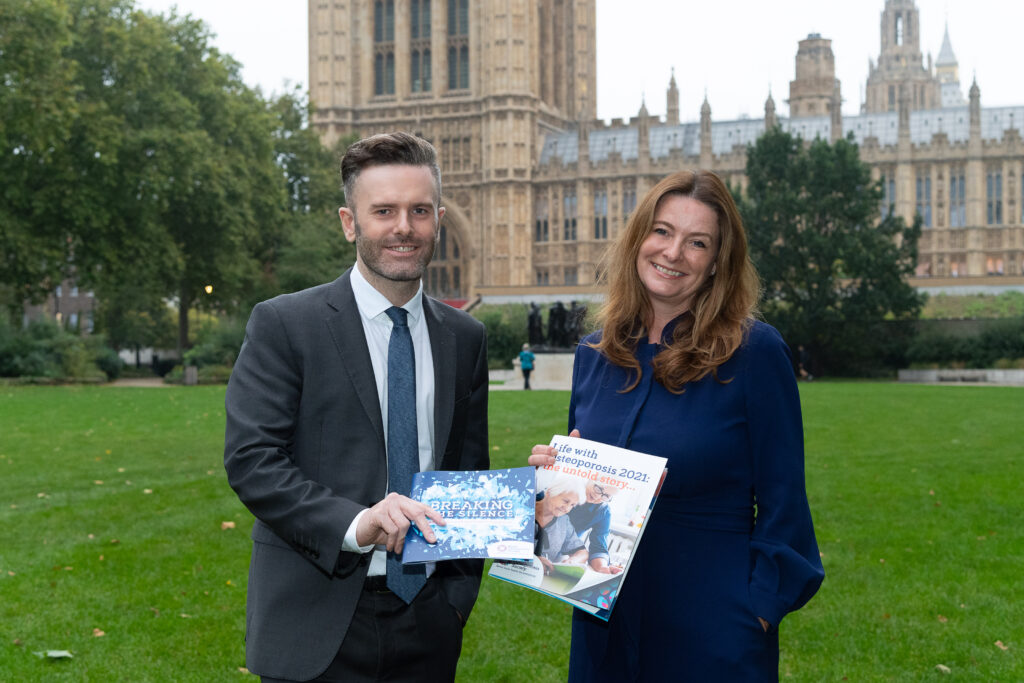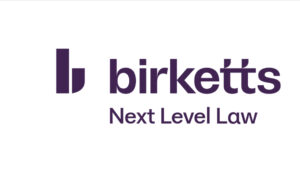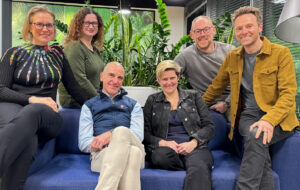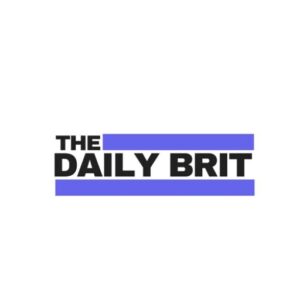HRH The Duchess of Cornwall hosts World Osteoporosis Day Afternoon Tea at Clarence House

On Wednesday 20 October 2021, HRH The Duchess of Cornwall, as President of the Royal Osteoporosis Society (ROS), hosted a tea at Clarence House to mark World Osteoporosis Day
Twenty-five volunteers and supporters were invited to the afternoon tea to mark World Osteoporosis Day – an important date around the globe to raise awareness of the life-changing and often forgotten condition.
Osteoporosis causes bones to lose strength and break more easily, sometimes even after just a fall from standing height, a cough, or a hug from a grandchild. Her Royal Highness has been President of the charity for 20 years this year and was a passionate supporter prior to that, as a result of her late mother’s and grandmother’s experience with osteoporosis.
Amongst the volunteers who attended the event was Valerie Farr, who was diagnosed with a rare type of osteoporosis, known as pregnancy associated osteoporosis, after having her first child.
Valerie said:
“It was fantastic to meet HRH The Duchess. She was really concerned to hear about the experience that I’d had getting diagnosed. We also talked about treatment and how we could make more people aware of the impact of osteoporosis.
“World Osteoporosis Day is an important opportunity to raise awareness of the condition and I’m so happy to be part of the effort to make this condition more visible.”
Six weeks after having her first child, in 2016, Valerie started to experience severe pain. She couldn’t bend over the crib, or pick up her baby son, she couldn’t change him, and she couldn’t get the buggy in and out of the flat. After a long journey of tests and x-rays, Valerie was told that she had fractured two vertebrae and was diagnosed with osteoporosis at the age of 40.
Valerie explained:
“I felt let down that it had taken so long to get a diagnosis. I felt like there wasn’t enough information given to me and I had to look for it myself. Aside from the physical pain I’ve experienced, the impact on my mental health is also very real – there’s big things like feeling guilty about how it affects being a Mum, as well as small things like not wanting to leave my house in ice and snow. We need a greater understanding of osteoporosis and bone health to help prevent the debilitating impacts it can have on people’s lives.”
Every day, someone suffers a broken bone (a fracture) every minute due to osteoporosis1. The condition has a devastating personal, societal and financial impact on people’s lives – yet it is often referred to as ‘the silent disease’ because of under-diagnoses, under treatment and low public awareness.
The event hosted by HRH The Duchess of Cornwall highlighted the importance of supporting people living with osteoporosis. The ROS, as the UK’s only national charity dedicated to bone health and osteoporosis, published the biggest study into life with the overlooked health condition for many years on World Osteoporosis Day.
The findings from the Life with Osteoporosis report2 provide new insight into how life has changed over the last decade for the 3.5m people living with osteoporosis.
Key findings include:
Over a quarter of respondents (26%) are living with long-term pain
Almost three-quarters (71%) have trouble with cleaning and cooking, two-thirds (67%) struggle with shopping, while over half (52%) say the condition affects their ability to get around
Just over half (51%) have reduced or stopped hobbies, while 47% have cut back on social activities
Almost one in five (17%) said they’ve had to scale back work because of their osteoporosis, either retiring early or reducing their hours.
Less than half (48%) were confident they’re on the right treatment regime
Craig Jones, CEO of the Royal Osteoporosis Society said:
“Low awareness of osteoporosis, and bone health in general, is a major barrier to ageing well. We are tackling that with the support of our President, HRH The Duchess of Cornwall, who has seen first-hand the devastating impact of this disease.
“Everyone should be paying into their ‘bone bank’ through weight-bearing exercise, good calcium levels in their diet and sufficient vitamin D, to help prevent osteoporosis and protect their independence in later life.”




